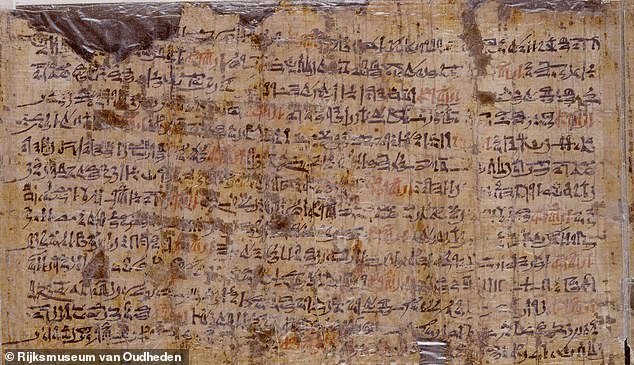An ancient Egyptian manuscript may prove the biblical 10 plagues described in the book of Exodus.
Known as the Ipuwer Papyrus, the document contains a poetic lament attributed to a scribe named Ipuwer.
It tells the story of widespread disasters and social upheaval in ancient Egypt, describing famine, mass death, and environmental disasters.
According to Exodus, God sent a series of devastating plagues, including turning the Nile into blood, swarms of locusts, and three days of darkness, to convince Pharaoh to free the Israelites from slavery.
The Ipuwer Papyrus appears to describe many of these same events, as one line reads, “There is blood everywhere… Behold, the river is blood,” mirroring the Nile turning to blood in the Bible.
“Moses and Aaron did as the Lord commanded. In the sight of Pharaoh and in the sight of his servants he lifted up his staff and struck the water in the Nile, and all the water in the Nile was turned to blood,” Exodus 7:20 reads.
The papyrus also describes environmental devastation: “Lo, the trees are cut down, the branches are stripped off,” perhaps reflecting the turmoil that destroyed the crop, and “lo, the grain is lacking on every side,” illustrating widespread famine.
While the IPUWER Papyrus, now housed in the National Museum of Antiquities in the Netherlands, was discovered in the early 19th century, it has resurfaced on social media, where users are surprised they’ve never heard of the manuscript and believe it proves the Bible is true.
The IPUWER Papyrus, attributed to a scribe named Ipuwer, tells of calamities striking the land, including rivers turning to blood, crop destruction, famine, and widespread death.
The Bible tells us that God sent ten plagues to Egypt to convince Pharaoh to free the Israelites from slavery.
The first plague turned the Nile to blood, killing fish and poisoning the water.
Egypt was then struck by swarms of frogs, lice, and flies, as well as a deadly livestock disease and painful boils.
A severe storm, a swarm of locusts, three days of thick darkness, and finally the death of every firstborn son forced Pharaoh to release the Israelites.
Against this biblical backdrop, the IPUWER Papyrus offers a strikingly similar account of disasters in Egypt.
Estimates place the IPUWER Papyrus between 1550 and 1290 BC. However, some scholars suggest that this may align with the biblical timeline of Exodus around 1440 BC.
Biblical historian Michael Lane said in a recent study: “There is no conclusive evidence to pinpoint the exact date of its composition, but because of its written style, it appears to have been written by an eyewitness. A large number of scholars place it around the biblical date of 1440BC.”
Despite the intriguing parallels, scholars are wary of interpreting the papyrus as direct evidence of the exodus.

The book of Exodus describes the ten plagues of God. The first curse saw the waters of the Nile struck by Moses’ staff at God’s command, turning them to blood in an act of divine judgment.
The text is poetic and fragmentary, and does not directly mention Moses or the Israelites.
Some have suggested that it may instead reflect the broader natural disasters and social upheavals that Egypt experienced independently of the biblical narrative.
The manuscript vividly depicts the collapse of society with lines like “murmurs are in all the land, mingled with lamentations,” mirroring the mourning described in Exodus 12:30, when “there was not a house where there was not one dead.”
One passage reads, “The birds find neither fruit nor herbs,” reminiscent of the biblical plague that “covered the whole land until it was black…nothing green remained on the trees or plants in all the land of Egypt” (Ex. 10:15).
The text also repeats the biblical plagues’ attacks on the Egyptian gods with blood, a river of frogs, and darkness, recalling Hapi, Heqet, and RA.
It alludes to slavery and wealth, noting the precious metals and stones attached to female slaves, reflecting the slavery of the Israelites and the transfer of the treasures carried.
Another passage, “Behold, many dead are buried in the river, the stream is a grave, the grave has become a stream,” matches the biblical descriptions of mass burials (Numbers 33:4). The devastation is summed up simply yet powerfully: “Everything is ruined.”
Together, these passages suggest a society embroiled in environmental, social, and spiritual crisis, echoing the layered calamities of the biblical narrative.













